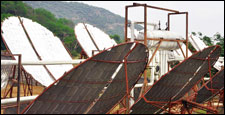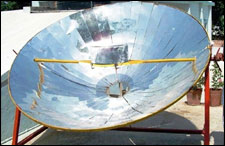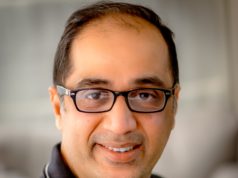 Badal Shah,
Badal Shah,
Managing Director & CEO,
Flareum Technologies
Badal Shah has been in the field of clean energy from more than a decade. Flareum is a solar technology company that has to its credit unique projects like India’s first ‘Green Jail’ and the country’s first ‘smoke-free’ village. Shah asserts that much can be done on the policy front to make the entire solar value chain sustainable. An interview by Venugopal Pillai.
At the outset, tell us about the scope of replacing conventional institutional cooking by solar cooking in India. Which institutions are most amenable to adopting solar cooking?
The scope for replacing the conventional cooking by solar cooking is huge, since the food prepared is more hygienic and clean. Places where mass cooking is done, be it a cafeteria or a community kitchen, can be easily adapted for solar-based cooking.
What about the solar cooking project that Flareum recently completed for Sabarmati Jail in Gujarat?
Flareum Technologies, leaders in solar thermal systems, has designed a unique solar cooking system for Central Jail at Sabarmati, Gujarat, that provides meals to 3,000 inmates daily and will save fuel costs of around 2 million per year and reduce 72,000 tonnes of carbon emissions annually over the anticipated 25-year life of the system. Central Jail solar-powered system replaces traditional firewood and gas-fired cooking.
 We understand that Flareum was also involved in what is India’s only “smoke free” village.
We understand that Flareum was also involved in what is India’s only “smoke free” village.
Bysanivaripalle, 125 km northwest of Tirupati, has 36 families. Flareum Technologies supplied 26 SK14 solar cookers to this village under a CSR activity. Apart from preparing rice, the solar cookers are used to fry chips, roast peanuts and make traditional Andhra sweets. Eyeing sales in the nearby Madanapalle town, a few enterprising people are baking cakes and biscuits too.
In a general sense, can you discuss how off-grid solar applications like water heaters, cookers, air-conditioners etc. can be leveraged to displace grid power and also fossil fuels?
As cited above, it is easy to replace the use of fossil fuel such as wood and coal for domestic use, by solar cookers. Similarly, with new innovations and technology the storage of solar energy for long term is becoming possible hence we could have a “per-home” power system rather than a single “ongrid” system.
What role is carbon trading playing in India’s solar energy pursuits?
Well, India’s carbon market is one of the fastest growing markets in the world and has already generated approximately 30 million carbon credits, the second highest transacted volumes in the world. And with more investment into solar such thanks to the Jawaharlal Nehru National Solar Mission, this market can be further expanded and capitalised on.
 With regard to government support for solar-based enduse applications like solar cookers etc, do you have any specific recommendation to further improve the situation?
With regard to government support for solar-based enduse applications like solar cookers etc, do you have any specific recommendation to further improve the situation?
The government has done a lot when it comes to solar power. This ranges from giving subsidies to framing policies to making use of solar compulsory for the state governments. Still, a lot more can be done by making policies not just for the end product but also looking at the complete product value chain. Policies should even cover parts used (in solar equipment) so as to make the Indian solar industry more sustainable and competitive.
How can the usage of energy- efficient devices like LED lamps, in conjunction with clean energy sources, help reduce carbon footprint even further?
The amount of CO2 emitted by a LED lamp is only 451 pounds per year which is 90 per cent less than what a normal incandescent light bulb which emits 4,500 pounds of CO2 per year.
Even though solar-based applications can contribute towards carbon footprint mitigation, what are the main limitations in the Indian context?
The main limitations that one can perceive in Indian context are the mindset pertaining to the initial capital investment. The investment is much more as compared to any other source of power.
Can you summarise some key corporate objectives that you would like Flareum to attain in the medium term, say, five to seven years?
As an organisation Flareum has made a mark in the solar thermal sector and going ahead we would like show greater excellence in the green energy segment.











